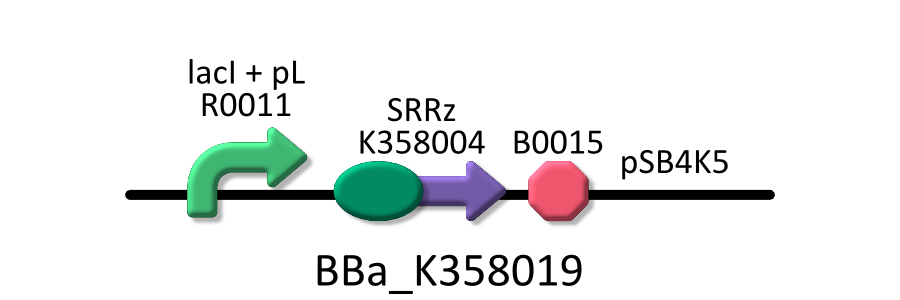Team:Kyoto/Project/Goal B
From 2010.igem.org
(→Introduction) |
(→Method) |
||
| Line 4: | Line 4: | ||
λ Lysis cassette is a gene that causes cell lysis.In previous iGEM, some teams evaluated the lytic activity of λ Lysis cassette qualitatively. However, when we considered λ Lysis cassette not only as a device of cell lysis but as a device of cell death, we must study about λ Lysis cassette more quantitatively.For example, we must study about when cells die, how many cells die, and the relationship between them and the activity of its promoter. | λ Lysis cassette is a gene that causes cell lysis.In previous iGEM, some teams evaluated the lytic activity of λ Lysis cassette qualitatively. However, when we considered λ Lysis cassette not only as a device of cell lysis but as a device of cell death, we must study about λ Lysis cassette more quantitatively.For example, we must study about when cells die, how many cells die, and the relationship between them and the activity of its promoter. | ||
| - | === | + | ===Construction=== |
[[Image:KyotoFigC004.png|300px]] | [[Image:KyotoFigC004.png|300px]] | ||
Revision as of 07:11, 26 October 2010
Contents |
Goal B: Characterization of λ Lysis cassette
Introduction
λ Lysis cassette is a gene that causes cell lysis.In previous iGEM, some teams evaluated the lytic activity of λ Lysis cassette qualitatively. However, when we considered λ Lysis cassette not only as a device of cell lysis but as a device of cell death, we must study about λ Lysis cassette more quantitatively.For example, we must study about when cells die, how many cells die, and the relationship between them and the activity of its promoter.
Construction
To characterize the lytic activity of λ Lysis cassette quantitatively, we regulate the gene expression of λ Lysis cassette by a lactose promoter, R0011, which we characterized quantitatively by RPU in GoalA. To repress the basal expression of λ Lysis cassette without IPTG as possible, we used pSB4K5, a low copy vector, as a plasmid backbone and used KRX as a host cell. Needless to say, we characterized R0011 in the same experimental condition.For more detailed explanation of the characterization of R0011, go Goal A
 "
"


